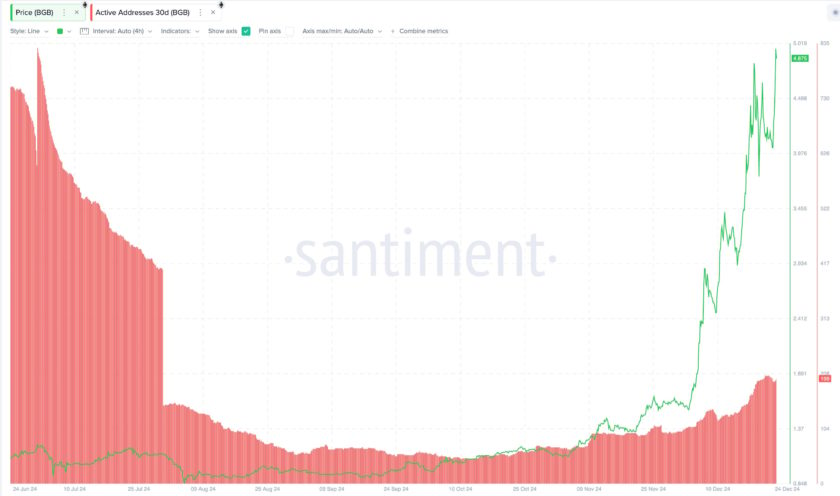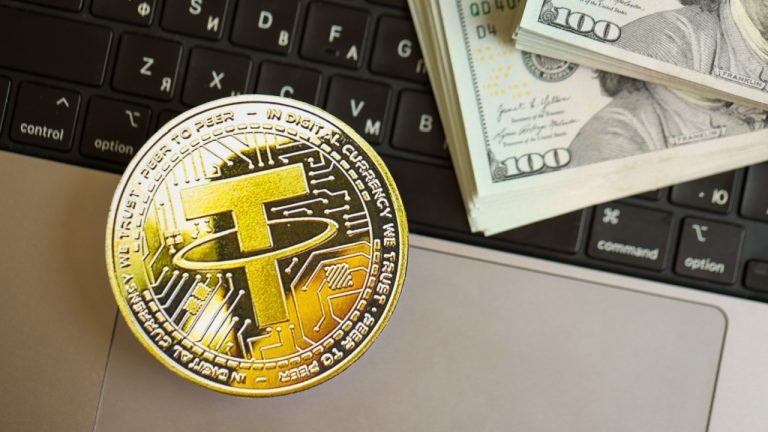A blockchain project is facing an uproar from community members who say the team has been undermining the value of the token it used to raise millions.
The controversy around Quantstamp, maker of a protocol that seeks to decentralize smart contracts auditing, reached a fever pitch late last week, with acrimony spilling into the project’s social channels. There, representatives for the San Francisco-based company, registered in Delaware, took heated questions from token buyers.
At issue is Quantstamp’s acceptance of U.S. dollars and ether, rather than its token, QSP – which it used to raise a little over $30 million in an initial coin offering (ICO) last November – as payment for smart contract audits it has performed.
In that offering, the company exceeded a targeted $11 million by $9.5 million, raising $20.5 million from an initial round. The remaining $9.5 million was sold through a public crowdsale. So far, 65 percent of those issued QSP tokens, out of a 1 billion supply, have been distributed.
Quantstamp raised the funds under a Reg-S exemption, one that seeks to cover U.S. entities raising funds abroad, according to a December filing with the Securities and Exchange Commission.
But Friday’s discussion showcases that token owners are beginning to question the degree to which both QSP and the company’s own technology have been involved in the 484 audits Quantstamp claims to have completed, according to its website.
Documents obtained by CoinDesk indicate that the company has accepted ether (ETH) for services in one instance and priced its offerings in U.S. dollars in another, practices that appear to have run afoul of user expectations, with some claiming this clashes with practices they believe the company said it would pursue.
“We are concerned that you guys don’t need the token to grow in value for your company to succeed as a payment for manual audits,” James Chun wrote in the Quantstamp project’s Telegram group on June 10.
The same day, another user in the group, who goes by the handle “Carine,” framed the concern this way:
“As a token holder, we only benefit from those willing to hold and find value in the token. If the use case is unclear, this will not translate to increased ROI.”
Compounding the issue for these users is that the company wouldn’t say how frequently it has accepted payment in a currency other than QSP.
“Communication of the percentage of audits paid in QSP or USD would clear a lot [of] things up,” a third Telegram user, “Gato,” wrote June 11. But “for now it seems like [a] really vague story.”
In a statement to CoinDesk, Quantstamp said, “from the start we’ve been following the roadmap put forth in our initial white paper.” The company declined to answer numerous other questions on the record.
Pricing of services
Stepping back, however, it’s worth noting that in spite of user complaints there remains a real need for the kind of project envisioned by Quantstamp.
Founded by Richard Ma and Steven Stewart, both software engineers, Quantstamp cited in its white paper attacks on smart contracts in which hackers were able to steal millions as the motivation for starting the effort and raising funds. Underscoring the idea’s appeal, last November, Quantstamp announced its participation in the Y Combinator class of 2018, a prestigious accelerator program which provides startups with seed funding.
But, an open question token buyers now seem to be raising is whether the company’s decisions are economically aligned with their interests as well as the project’s original design.
Like most decentralized projects, Quantstamp not only envisions that certain actors necessary to its launch will become less important over time, but that a central entity is needed to bootstrap the idea until its management can be given completely to users.
“On the matter of open sourcing our codebase, that has always been the long-term goal because how else can the community take over the project?” co-founder Stewart said June 10 on the Telegram thread. “But, my present stance is that the codebase must reach a certain level of maturity first.”
This may be contributing to impressions held by users that Quantstamp’s acceptance of the token is key to its current, and perhaps future value, but public statements as to the relationship between the company and its tokens are limited.
In a review of Quantstamp’s public Twitter and Medium messages, as well as its ICO terms and conditions, the company doesn’t seem to have ever explicitly stated that it would accept only QSP tokens for audits. However, until the public grilling Friday, the company hadn’t indicated that it would accept U.S. dollars and ETH (though its white paper carves out room for exceptions).
“No person is bound to enter into any contract or binding legal commitment in relation to the sale and purchase of the QSP tokens and no cryptocurrency or other form of payment is to be accepted on the basis of this white paper,” it states.
Elsewhere, language on the Quantstamp website seems to hint at reasons for the confusion.
The company’s “Request a Full-Service Audit Form,” available online, only includes an option for users to pay in QSP tokens, specifically stating that “QSP tokens are required to power audits” and that users “must hold a minimum of 200,000 QSP to request an audit.”
According to the company’s published materials, users are meant to trade QSP to pay for, receive and improve verification services within the Quantstamp network.
This means bounty-hungry bug fixers receive QSP tokens from contract creators, as do code contributors verifying the Solidity programs used to implement the contracts, and validators running the Quantstamp validation node.
Software use
Also at issue, though, is whether token holders accurately understand the state of development as it relates to Quantstamp’s core technology.
While Quantstamp has been conducting audits, and publicizing its alleged success in performing the service, the protocol the company raised funds to build is far from complete.
According to a timeline in the original white paper, Quantstamp isn’t expected to begin using its own protocol to conduct audits until late 2018. However, this schedule suggests it was meant to begin work on its smart contract insurance with partners in June. To date, it remains unclear how much of the company’s technology has been built.
And it’s important to note, any tokens that would power such a protocol may not currently exist. QSP, as it stands, is a token that runs on the ethereum protocol. The company has not decided whether it will swap those tokens for new ones when its network is up and running, and the white paper does not address this question.
Quantstamp said in its statement to CoinDesk:
“This is a major decision and something we are spending time and resources on to determine the best course of action for our business, investors and community. At the appropriate time we will make a corresponding announcement.”
Still, the company has also been faulted by users for using open-source tools developed by competitors, namely Mythrill and Oyente, to conduct the audits, rather than the technology it claims to be developing.
Stewart confirmed on the Telegram channel that it is doing so, saying, “Yes, the web product uses Oyente, an open source project that we have also contributed [to].” To which a user going by the handle “aplitt” responded, “In that case, I believe that fact should have been disclosed, proper attribution should have been given, and it should have been offered without charge.”
One possible explanation is that the current audit service is a separate activity from realizing the vision in the white paper, undertaken to generate revenue. Indeed, this is not an unheard-of practice among startups, one that helps them to keep the lights on while they embark on long-term infrastructure building.
But if so, that was not made clear to many users, who had interpreted the firm’s April 30 announcement of a “live working product” as a sign of progress on Quantstamp’s proprietary technology.
Public grilling
But if user sentiment has been building against Quantstamp, its representatives appear to be doing little to defuse the situation.
Founder Richard Ma, who also describes himself as Quantstamp’s “Chief Caring Officer” on his Medium page, joined the company’s Telegram thread at 23:00 UTC Friday to speak to investors, beginning communications that lasted for nearly an hour and a half.
There, he was greeted with pointed criticisms of his short, sometimes vague responses. One frustrated Telegram user, Ryan Edmondson, asked, “Is this a soliloquy or a Q&A from people who really need answers?”
When Ma told the channel to reference the white paper for more information, another user sarcastically asked, “How can we read your whitepaper when you are rewriting it?” in a message that was subsequently deleted.
After receiving a volley of questions along the same lines, Ma finally admitted that U.S. dollars and ether were accepted for audits in certain cases.
“Any USD or ether proceeds that we receive instead of QSP for manual audits support our overall mission to innovate in order to secure smart contracts,” he said.
“Some customers can’t buy QSP to pay us, which means that we miss out on the opportunity to be helpful and stay true to our mission of driving smart contract adoption for the ecosystem,” Ma continued. “Other times, when the audit is very important for the community, such as the Binance audit, we audit at little or no cost, as a service to the wider community.”
From the thread, it seemed that Quantstamp was conducting some of its auditing for “little to no cost” in the case of cryptocurrency exchange Binance (which hired the firm to audit listed ERC-20 tokens), some in exchange for QSP tokens and some in exchange for dollars or ether depending on the customer.
However, when Ma was repeatedly asked what proportion of revenue was split between audits done in exchange for QSP tokens versus other currencies, he simply responded, “I can’t talk about any of this stuff.”
Frustrated users on the Telegram thread continued the conversation over the weekend, and it was still going strong at press time.
Ma’s statement that some customers can’t buy QSP points to a possible defense of Quantstamp’s policies: because it never offered tokens to U.S. buyers, it has been unable to accept that method of payment when rendering its services to domestic customers.
What next?
Apart from Quantstamp’s technology and token economics issues, a third complication plaguing the startup is a handful of recent employee departures.
These have also sparked suspicions of turmoil at Quantstamp on its associated Telegram thread.
“We restructured the team to help us in the next stage of product development,” said Ma when asked about the matter by concerned users.
He named three employees – two engineers and a UX designer – who he said were laid off for performance issues. “It’s a startup company – sometimes we need to fire people if they don’t perform well. But as a startup company – we will also build, and we will hire good people and deliver.” As of Tuesday, the company website listed 29 employees in total.
Yet despite such assurances, the departures have given Quantstamp token holders one more reason to fret.
“When a bunch of people leave the company not just one or two, it’s usually a sign [of] bad company culture or something [like] internal conflicts,” said Telegram user “mindcrack.”
Following Friday’s contentious digital town hall meeting, the price of Quantstamp’s QSP token slid over the weekend as part of a broader rout in the cryptocurrency markets. Late Tuesday afternoon, the token was trading at about $0.10, off from an early-January all-time high above $0.80, according to CoinMarketCap. QSP’s market capitalization now stands at $65 million.
Indeed, the decline in crypto prices overall since the beginning of the year has likely contributed to the suspicious sentiment in the Quantstamp community, as one sympathetic Telegram user pointed out.
“Having to deal with a crypto community in a bear market is hectic,” wrote Trent Savage. “If we were at [an all-time high] – even if everything else was the same – you wouldn’t have to deal with a hyperventilating community. There would be a lot more ‘w[h]en lambo’ – ‘QSP is great’.”
Nevertheless, a comment from one particularly disillusioned user, aplitt, seemed to capture the overall tone of public sentiment and loss in investor confidence expressed over the course of the thousands of messages exchanged on the company’s extensive Telegram thread.
“I don’t think they have any secret sauce or competitive advantage technologically and now they have a big contingent of previously loyal holders who have lost trust because they have misled us about token utility in connection with the manual audits,” aplitt wrote, concluding:
“What’s left is a broken promise and a sliver of hope. Not good enough for me as an investor.”
Quantstamp image via Facebook
The leader in blockchain news, CoinDesk is a media outlet that strives for the highest journalistic standards and abides by a strict set of editorial policies. CoinDesk is an independent operating subsidiary of Digital Currency Group, which invests in cryptocurrencies and blockchain startups.




